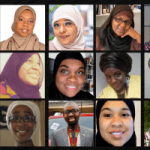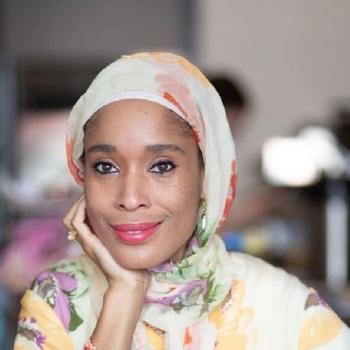 Recently, a story about a group of women kicked off a wine train began circulating through social media. They were members of a book club, comprising mainly of Black women, laughing on the Napa Valley Wine Train. Apparently, one White female passenger disliked the women’s revelry and complained. Ultimately, they were escorted through six train cars, ejected and confronted by police. The group received a full refund, but the ordeal left them humiliated.
Recently, a story about a group of women kicked off a wine train began circulating through social media. They were members of a book club, comprising mainly of Black women, laughing on the Napa Valley Wine Train. Apparently, one White female passenger disliked the women’s revelry and complained. Ultimately, they were escorted through six train cars, ejected and confronted by police. The group received a full refund, but the ordeal left them humiliated.
It is a curious thing for a Muslim project to write about something that took place on a wine train. However, it is not the venue but the treatment of the Black passengers and the catalyst for it that warrants attention. It shows how one white person exercising their privilege can strip People of Color, especially Blacks, of their liberties and dignity. In 2013, a Wild Wing Café restaurant expelled a Charleston family because one white patron complained that she felt uncomfortable around them. These occurrences demonstrate the degradation Black Americans encounter because some Whites desire to erase them from social existence.
Disagreeable behavior in Whites often goes unchecked, but Blacks are immediately put in their “place” or out of place if a White person arbitrarily decides that their manners and movements are offensive. In the above examples, entire groups of Blacks were evidently mistreated because their occupied spaces were in proximity to Whites who implicitly or explicitly loathed their presence.
White aversion to Black bodies is part of the country’s dysfunctional race structure. In White Racism: A Psychohistory, Joel Kovel notes that racists whites, “have a disgust about the body of a black person based upon a primitive fantasy: that it contains an essence-dirt-that smells and may rub off onto the body of a racist.” Thus, the country’s racial structure indoctrinates Whites into a code and erroneous mindset that their whiteness makes them somehow purer. Consequently, many embody an underlying aversion to Blacks, no matter how well dressed or mannered. The laughter of the Black train riders stimulated a visceral response in some Whites, who then sought their immediate removal. Societal training to vilify the Black body extends to Blacks and non-Blacks as well.
NbA Black Muslims are frequently subjected to incidents of aversion to their bodies from the broader society as well as in American Muslim spaces. Many non-Black American Muslims interact with their Black brothers and sisters without engendering learned abhorrence. However, there does exist a racial undercurrent in Muslim communities resulting in various microaggressions that indicate to Black Muslims their presence is unsettling and unwelcome. For example, Black Muslims are commonly isolated and stared at in majority non-Black Muslim venues without being invited to engage in discourse. In Intra-Muslim Racism: Confronting Ethnic Slurs and Racism among American Muslims, Dawud Walid asserts, “I have witnessed new reverts to Islam, who have been run out of the Muslim community due to racism.” Therefore, spaces like the masjid, meant to be places of solace and fellowship, become cold and uninviting for Black Muslims, mentally/emotionally ejected from them like the passengers on the train.
Whether masjid, wine train, or restaurant, Blacks and People of Color have a right to traverse society without the latent racist proclivities of anyone corrupting their lives.











